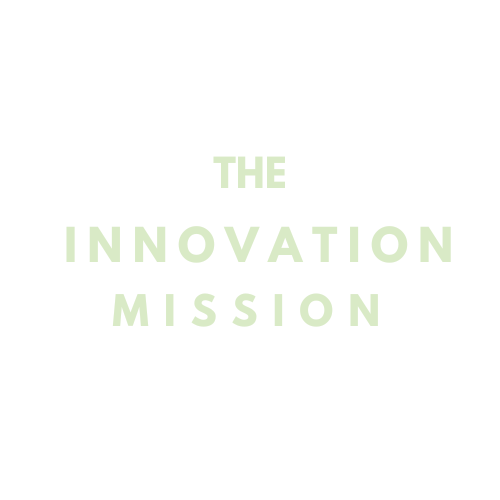Reflections on a new era of Australian innovation and industrial policy
I have been digging into the various reviews by the current Australian government—of The Australian Research Council (ARC), our national science and research priorities and the Department of Industry’s commercialisation programs, among others. They all seem to be scratching around for one fundamental answer: how does Australia create a more sustainable industrial policy and better innovation incentives in the economy to drive higher growth and dynamic new(er) industries?
As an Australian-American born in the US, I am always struck by the various subtle cultural nuances that make Australian political culture a very different beast than that of my original homeland. The first being the need for exhaustive reviews by the incoming government. Perhaps this is a peculiarity of the Westminster system? It seems to me that with three-year terms and constant leadership challenges in Aussie politics, politicians may want to skip the post-mortems and move briskly to the implementation phase of new policy and strategy.
Incremental innovation is relatively well supported in Australia, but it's critical that how to fund and incentivise breakthrough innovation that will have a major impact on the Australian economy and society at large gets a serious look. ‘Big bet’ innovation and transformational innovation do after all require a degree of boldness, vision and dare I say it—audaciousness that won’t be found in mountains of cross-cutting reviews that tinker around the edges. An innovation economy is driven by culture and culture change is driven firstly by leadership! So, if we want bold innovation outcomes not just high-quality inputs, we need someone like Ed Husic to start being a bit audacious and the ALP to be bold in its economic vision for Australia’s future.
The recently legislated National Reconstruction Fund may be a vehicle for the vision we are waiting for, but much of what makes it sink or swim will be in the messaging and the risk settings when it is rolled out. Messaging was, in part, the problem in the failure of the Malcolm Turnbull era innovation strategy. As Technology Editor of The Australian Financial Review Paul Smith eloquently pointed out, the Turnbull innovation message focused on disruptive and ‘scary’ aspects of innovation. Instead, we need this government to frame innovation as a pathway to the betterment of Australian society and a way of achieving ambitious goals.
The cultural cliches unfortunately still ring true for Australia. Despite our significant wealth of upstream research, immense workforce talent and growing levels of domestic venture capital, innovation performance (be it measured by commercialisation, start-up success, homegrown technology development, etc.) is still lagging. In fact, Australia still ranks last in the OECD for business collaboration on innovation with higher education or government institutions. I would say the problem lies with both government and the broader Australian community’s ability to grapple with risk. As many submissions to the ARC review noted, how can we power breakthrough research when grant applications take a month to prepare at 100+ pages and 10 months to award? Risk settings matter a lot more than people think.
There are understandable reasons for our culture of relative risk aversion: Australia experienced a run of unprecedented growth and prosperity—nearly 30 years without a single quarter of negative GDP growth. We even weathered COVID well in economic terms. If things were good, and we weren’t under material threat or pressure, where was the innovation imperative? It also makes sense that governments and industry think about the risk of losing things rather than the risk of not propelling ourselves forward.
Malcolm Turnbull started the Australian innovation conversation back in 2016, urging Australians to embrace risk and think of Australia as an innovation nation. What Turnbull had in surface-level boldness got unfortunately watered down with a lack of prioritisation and focus that aligned with Australia’s niche capabilities. Spreading ourselves too thin to do anything meaningful means we are falling behind. That’s unfortunately not how ‘big bet’ innovation works, particularly in a relatively small country like Australia.
The National Reconstruction Fund and the science prioritisation review should, in theory, help in whittling down the focus. But again, the political impulse to just add another category, industry or group for fear of upsetting various constituencies is strong. So far, the government’s priority lists are still sitting at around 6-8 sectors, when that list should be closer to 3. Bold leadership would be required to stand by choosing to back just a few simple priority areas of growth for Australia’s future. It’s called ‘big bet innovation’ and ‘not bet on everything’, right?
Finally, breakthrough innovation is rarely a matter of serendipity. Well-planned investments and processes are more likely to lead to true innovation outcomes than just setting the scene and hoping for the best. The 1960s American moon landing era is the oft cited example of how to do ‘moonshot ambition’ (obviously!). Huge investment combined with lots of good process to provide not just the right enabling environment for putting humans on the moon but also loads of inspiration and spillover economic growth benefits.
Unfortunately, boldness and focus alone don’t make for successful innovation strategy. Because no matter how good your policy and ambitions are, if the institutions and organisations that implement or are incentivised by your policies cannot manage their day-to-day functions well, then innovation efforts will likely come to nil. In other words: organisational performance and competency matter hugely. We need our government institutions to be able to do their basic functions well, while startups and SMEs need to be able to achieve strong profits and scale before they can begin to collaborate and have focused innovation efforts. We then need to ask these organisations yet again to do things differently, with different risk settings and a new level of ambition. I’m hopeful that we’re collectively up to the task.
